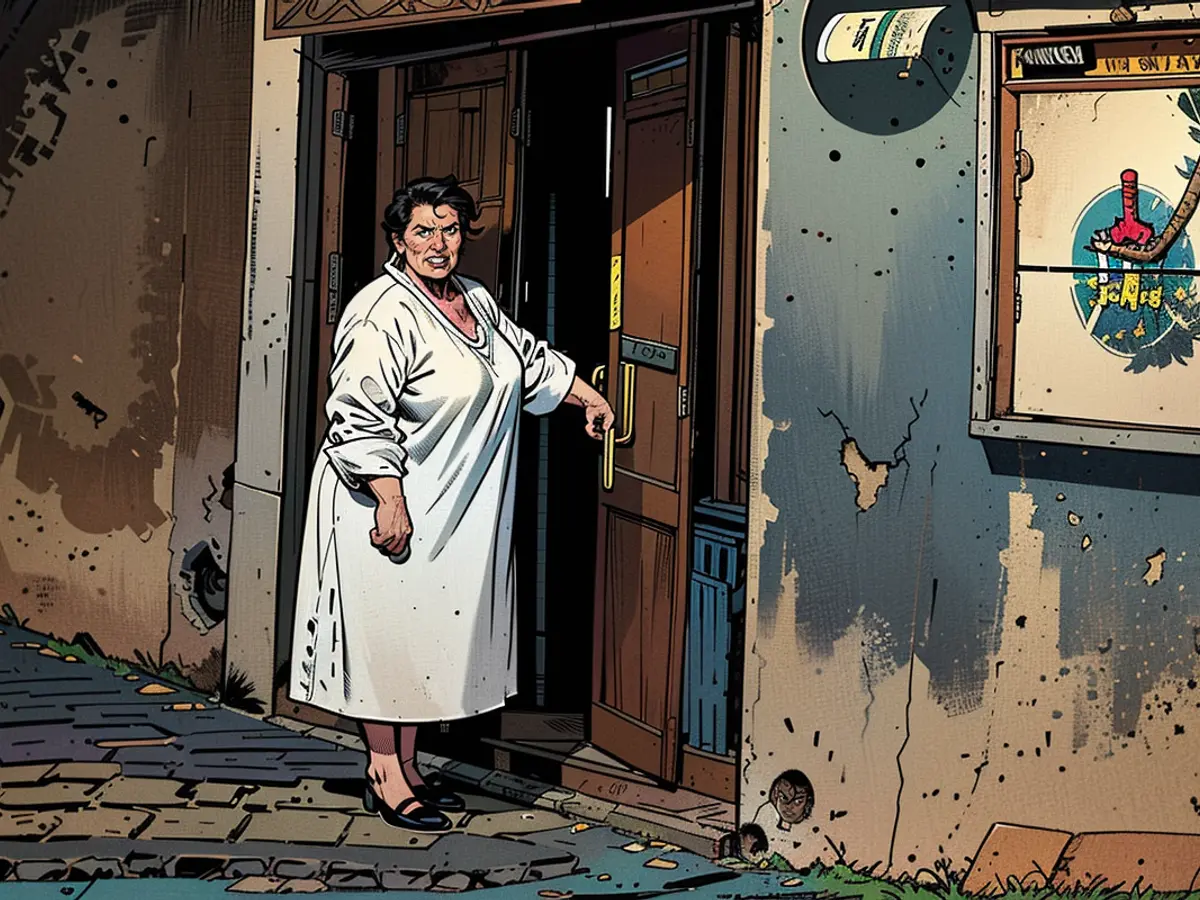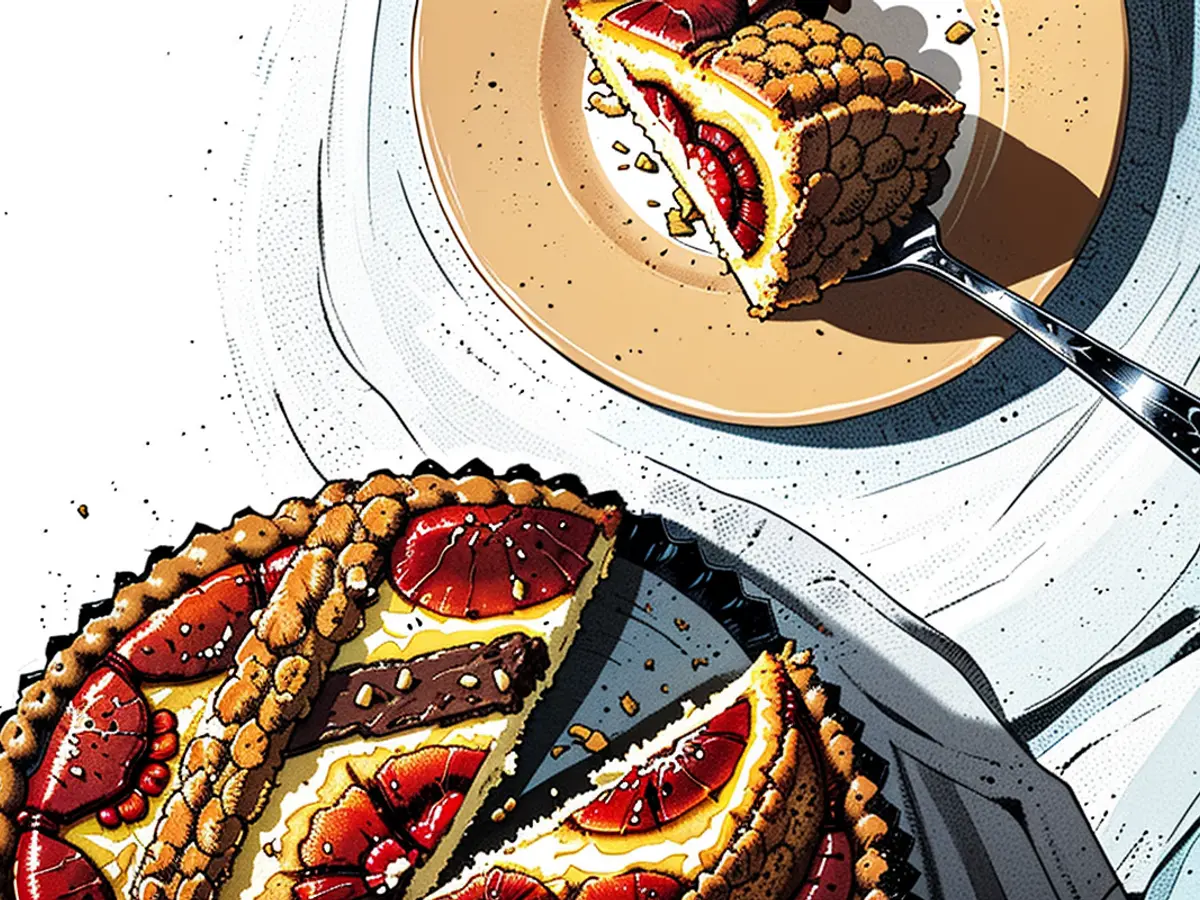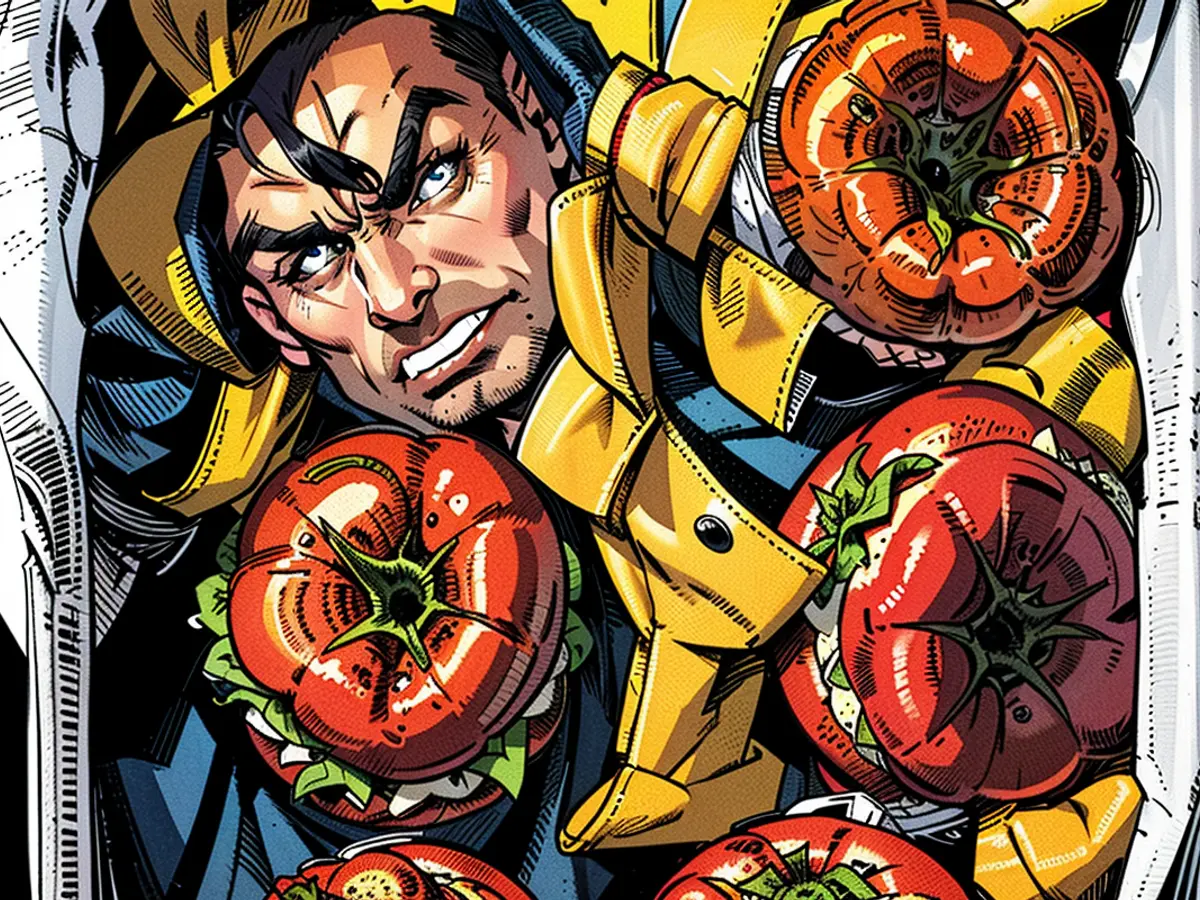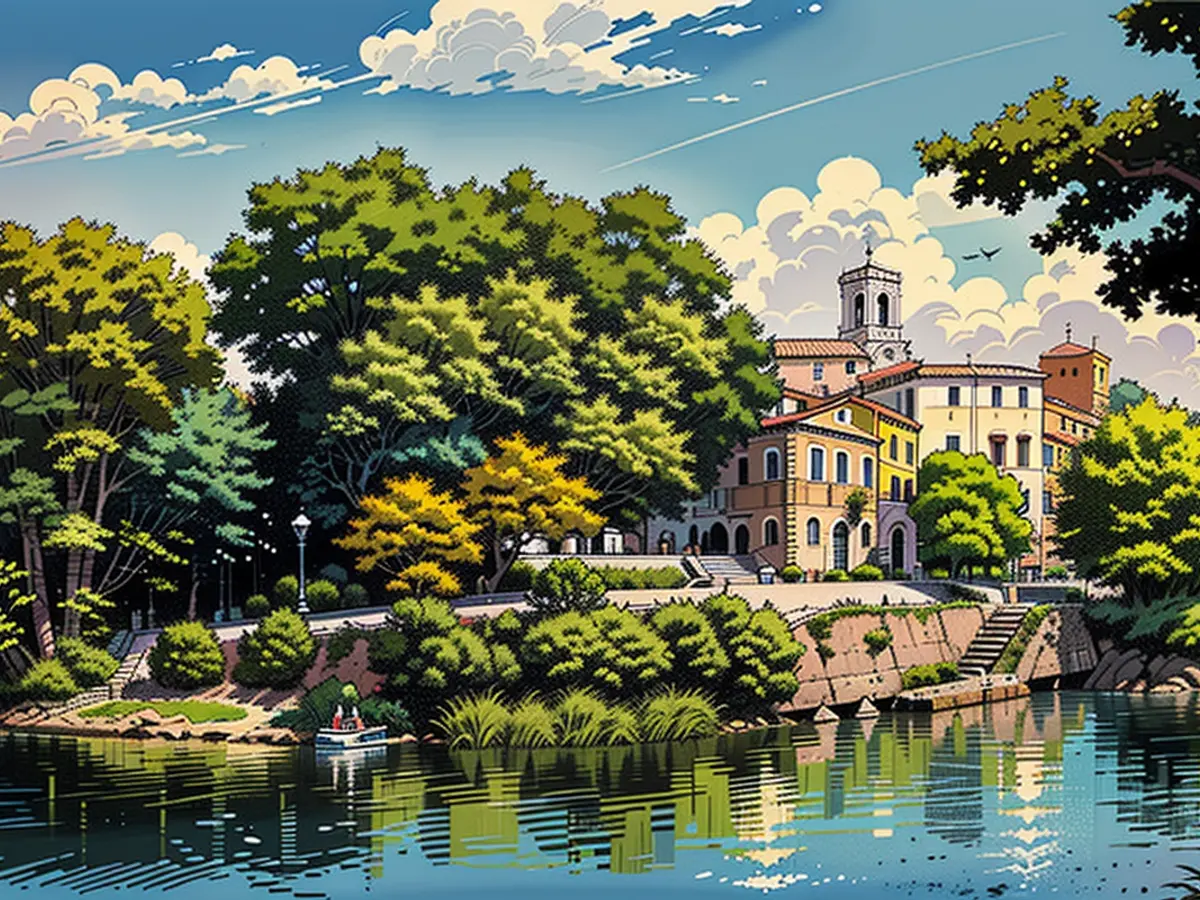Sora Lella lives on in her recipes
Have you ever been to Rome? I once visited the Eternal City years ago - or not, as it turns out. For I missed something: Sora Lella. The popular actress was also a talented cook and continues to live on her inheritance. Her four grandchildren have written an impressive book about her.
"When one comes to Rome, one takes photos of the Vatican, the Colosseum, and of course Sora Lella," I read in a cookbook about authentic Roman cuisine. I must have missed quite a bit back then, the Vatican and the Colosseum certainly not - but of "Sora Lella," I had no idea at the time. Thanks to the cookbook "La Cucina Romana," I now know what I need to make up for: going to eat at Trattoria Sora Lella on the legendary Tiber Island.
As the book says, "one is not in Rome if one has not returned to Sora Lella on the Tiber Island." Before I have Rome on my itinerary again, I indulge in the mentioned cookbook, whose subtitle reveals its content: "The Trattoria Cuisine of Sora Lella." The hardcover book was published by ars vivendi, and Renato Trabalza & Family (with Francesca Romana Barberini) wrote it.
Born Roman Elena Fabrizi is better known in all of Italy under her nickname "Sora Lella" ("Aunt Lella" in Roman dialect) since the 1950s, when she appeared occasionally in TV and film in small character roles. By the early 1980s, every child in Italy knew Sora Lella because she was frequently seen as the grumpy yet kindly grandmother in the films of director and actor Carlo Verdone.
"In her face, her physical appearance, her deliberate and rocking gait, her way of speaking, seasoned with dialectal, often outdated expressions, all elements of a genuine woman from the heart of the people of past times were combined. Her wisdom, her joy, but also her impatience, philosophical resignation, quick wit, and sharp gaze made her identifiable with those matrons of ancient Rome, as they were so well portrayed in Fellini's first films," Verdone writes in the book's introduction. "She was the grandmother that everyone loved": La nonna di tutti. Her true calling as a restaurant owner, gourmet, and guardian of traditional Roman cuisine remained loyal to Sora Lella throughout her life. Sora Lella died in 1993 in her beloved Rome at the age of 78.
Sora Lella's Grandchildren Preserve Her Legacy
Not only Verdone's foreword pays tribute to this woman. Memories of her family in the book and, above all, the wonderful recipes, which may surprise even seasoned Italy fans, are also part of it. For the cookbook "La Cucina Romana," Sora Lella's descendants have collected her best recipes, which were passed down orally for generations. Some of these recipes are not easy to cook for us today, especially regarding time and effort required. But it's worth the effort!
Additionally, in loving anecdotes, the story of a family in a Rome that no longer exists is told. In 1970, Sora Lella leaves the kitchen, under the leadership of her son Aldo, the reputation of the trattoria solidifies. "Papa Aldo" creates many dishes in his way, which still exist on the menu today. However, some modernization is necessary, and so Aldo institutes a day off - finally some time for the family. And the football stadium!
The trattoria still adheres to this tradition today: closed on Sundays.
All three of Aldo's sons - Mauro, Renato, and Simone - work in the family business in various areas. Elena, Simone's twin sister, gives in to Aldo and Renato's (now head chef) pleas in 2006 and joins the business. It is the year Aldo transfers the trattoria to his children; he dies in 2018. Elena, who bears the name of her grandmother, takes care of all administrative matters, as she doesn't enjoy cooking. Hard to believe, within the family!
The stories in the book often make me smile, such as the rooster, who was always mean to the hens in the coop, and ends up as the tender heart of a dish. Or why a 20-year-old Aceto Balsamico di Modena is so good that it could be used as Aftershave. Not all stories are funny, as many years of Sora Lella's life were marked by hardship; even her childhood was shaped by poverty.
Later in life, Sora Lella was no longer all sunshine in the kitchen. In 1935, Elena Fabrizi and Renato Trabalza marry; the young couple takes over their first trattoria in 1940. It is the war years: Rome experiences the deportation of Jews, fear, poverty, and destruction. After the war, crises do not cease, both in the business and in the marriage. Even the start of "Trattoria Sora Lella" gets off to a bad beginning. It takes months for the reputation of Elena and Aldo's kitchen to spread and for the fear of bankruptcy to disappear. Nowadays, reservations are necessary to secure a table. "Trattoria Sora Lella" is the project of an entire family, the book states, "with a hundred-year history behind it and a unique and singular story it has created for itself. A story that lives on what it was, how it has renewed itself, and from those who knew how to tell it. The story of Sora Lella, Aldo, Elena, Renato, Mauro, and Simone."

Renato is the one we have to thank for preserving Sora Lella's art. He records the many recipes for the first time in writing and, consequently, the history of the trattoria and the family. Kitchen secrets and culinary preferences are discussed in the book, and many tips make cooking easier. We learn how to make a perfect frittata (including a finger test and the significance of old iron pans) or how to prepare the authentic amatriciana (including Sora Lella's spoken instructions).
We recognize how important it is to distinguish between guanciale (pork cheek) and pancetta (pork belly) or that the "Fifth Quarter" is not to be forgotten despite the mathematical impossibility in authentic Roman cuisine. In the ten recipe chapters, traditional ingredients take center stage: lamb, artichokes, offal (the "Fifth Quarter"), Pecorino Romano, pork cheek, meat (mainly veal and beef), vegetables, fish, poultry, and sweets. In addition, important basic recipes are included, such as for gnocchi or for the sardine sauce for preparing puntarelle. The puntarella is a variety of chicory related to lettuce, with its bitter compounds very healthy and in season (autumn and winter) also available here.
When choosing ingredients, be creative, as not all the ingredients listed in the book may be available everywhere. You will find many things in Italian fine food stores or markets, like here in Berlin (Centro Italia), even many different tomato varieties, but probably not three types of guanciale. I was happy to find at least one type! In online shopping, I recently discovered at least two types: air-dried and smoked. At least!
Sora Lellas' passed-down recipes make "La Cucina Romana" a treasure also in our kitchens. However, the page numbers listed in the index are incorrect (but they are correct in the table of contents). The references in the recipes to other recipes are also incorrectly numbered. My tip: Add 2 to each page number, so it becomes, for example, page 51 instead of page 49. I hope that in a second edition everything is correct.
Gnocchi all'amatriciana (Gnocchi all'amatriciana)
Preparation:
Cut the guanciale into 3 cm thick slices and remove the rind. Lay flat and cut each piece into 2-3 mm thin and wide rectangles. Sauté in a pan without oil on medium heat until they are golden brown and crispy, allowing the fat to collect in the pan.
Using a slotted spoon, remove and set aside on kitchen paper. Deglaze the pan with white wine. Once the wine has evaporated, add the crushed tomatoes, then add about a glass of water, as well as 1 pinch of salt, pepper mix, and chili pepper. Cook on low heat for approximately 15 minutes, stirring occasionally. Five minutes before the end of cooking time, add 2/3 of the guanciale to the simmering tomatoes. Keep the remaining pieces aside (preferably near the stove, so they don't get cold).
Salt the water for the gnocchi lightly and bring to a boil. Cook the gnocchi in it for a few minutes. Drain and add to the sauce. Mix carefully on medium heat. Remove the pan from the heat, add half of the Pecorino Romano, and mix well.
Divide onto deep plates and sprinkle with the remaining Pecorino Romano. Garnish with the reserved guanciale. Serve.
Stuffed Tomatoes with Rice (Pomodori co' riso)

Preparation:
Cut off the tops of the tomatoes and scoop out the pulp. Cook the rice according to the package instructions. Fill the tomatoes with the cooked rice and place them in a baking dish. Drizzle with olive oil and bake in a preheated oven at 180°C for about 30 minutes.
Sauté the minced meat in a pan with olive oil until browned. Add the finely chopped onion and garlic, and cook until softened. Add the tomato pulp, a glass of white wine, and a pinch of salt. Cook on medium heat for about 20 minutes, stirring occasionally.
Once the tomatoes are baked, pour the meat sauce over them. Sprinkle with grated Pecorino Romano and serve.
This dish is hardly found in trattorias and restaurants nowadays, at most in a rusticceria [a type of grill snack bar]. Besides breaded schnitzels, this was the dish that gave us the most meals by the sea with nonna, papa, and the whole family - large forms filled with rice-stuffed tomatoes, wrapped in a large cloth with knots at the ends ... Ah, those were beautiful times!
Preparation:
Peel and cut potatoes into not too small cubes, about 5 cm in length. Bring lightly salted water to a boil and cook the potatoes for a few minutes. Drain and in a bowl with chopped rosemary, 2 crushed garlic cloves, salt, and pepper, mix by hand.
Wash the tomatoes, remove the stems with the flower buds and set aside. With a spoon, hollow out the tomatoes without piercing the bottom. Give the tomato flesh to a bowl. Finely chop the 2 remaining garlic cloves, onion, parsley, and basil with a knife and add to the tomato flesh. Then also add the dried oregano, tomato juice, 4 tablespoons of water, plenty of olive oil, salt, and pepper, and mix well. The sauce is now ready.
Furthermore, with rice: Wash it thoroughly to give it some starch and for it to remain grainy during the cooking process. Then add the tomato sauce to the rice in the bowl, mix carefully, and let it rest in the refrigerator for about 25 minutes.
In the meantime, lay out a large baking dish with parchment paper and brush the bottom with olive oil, sprinkle with salt and pepper, and then place the tomatoes with some space in between.
Now fill the hollowed-out tomatoes with the pre-cooked rice - but be careful, not too full, or they might burst when the rice cooks! Any excess rice can be spread on the bottom of the dish or over the potatoes.

Place the potatoes evenly between the tomatoes. Cover the tomatoes with their previously set aside stems and sprinkle with some more salt and olive oil.
Bake at 180 °C for about 1 hour. After removing from the oven, let it cool down. The stuffed tomatoes are eaten warm, but they even taste better cold.
Ricottacake (Torta di ricotta)
"The absolute delight for this cake would be a glass of cherry wine - a true revelation, if one had not known it before ..."
Preparation:
A round cake pan with a removable bottom, 28 cm in diameter and a 3.5 cm high rim (these dimensions fit the ingredient quantities), is best suited for this cake.
In a bowl, cream the soft butter with the sugar. Then add the eggs, salt, and lemon zest.
Sift the flour with the baking powder into the egg mixture and quickly incorporate it, until a smooth dough forms. Cover with plastic wrap and chill in the refrigerator for 30 minutes.
For the Ricotta to be drained in a sealed container in the refrigerator for 2-3 hours: It should lose some of the whey but not all, or it will be too dry for baking. Drain the Ricotta into the bowl of a food processor and blend at medium speed for 15 minutes. Alternatively, strain it through a sieve and then smooth it out by hand or with a hand mixer. Add the Sambuca, egg, and sugar, mixing carefully, and then place the mixture in the refrigerator.
Best wishes to you from Heidi Driesner - and don't forget "Sora Lella" next time in Rome.
After reading about Sora Lella's trattoria and the cookbook "La Cucina Romana," I am eager to visit Trattoria Sora Lella on the Tiber Island during my next trip to Rome. Italy's beloved Sora Lella, known for her talent in both cinema and cooking, left an indelible mark on Roman cuisine.
Her grandchildren have compiled her most treasured recipes in the cookbook, some of which may require extra time and effort for us modern cooks to accomplish but are indeed worth the effort. Among these recipes is the authentic amatriciana, one of Rome's traditional dishes.
[This formula could be followed by another sentence that expands on the cookbook or recipes, but the ones you provided already cover the subject quite well.]







